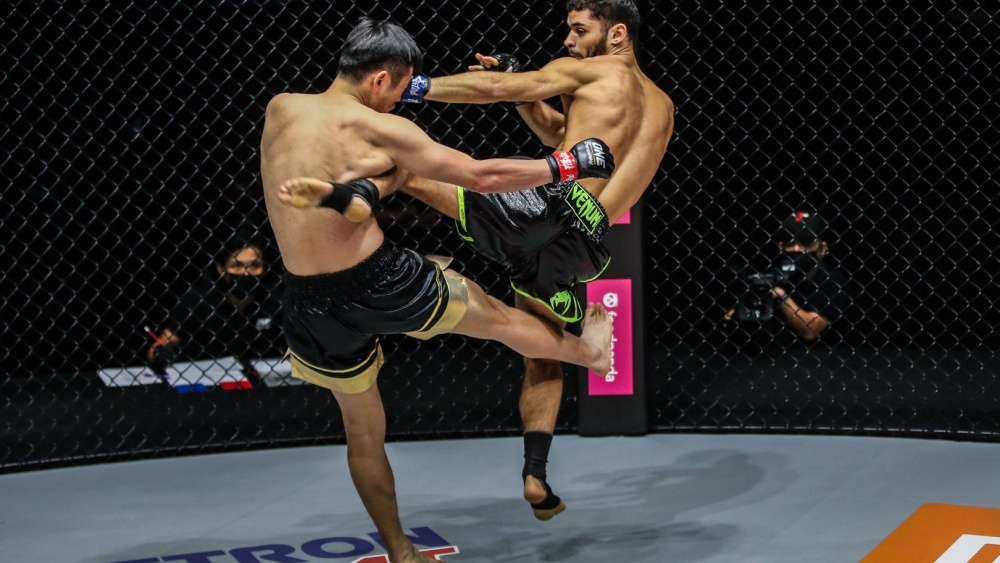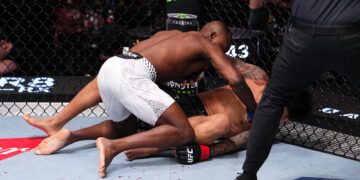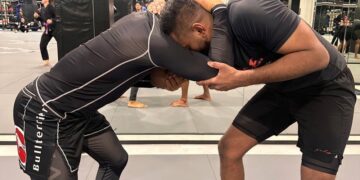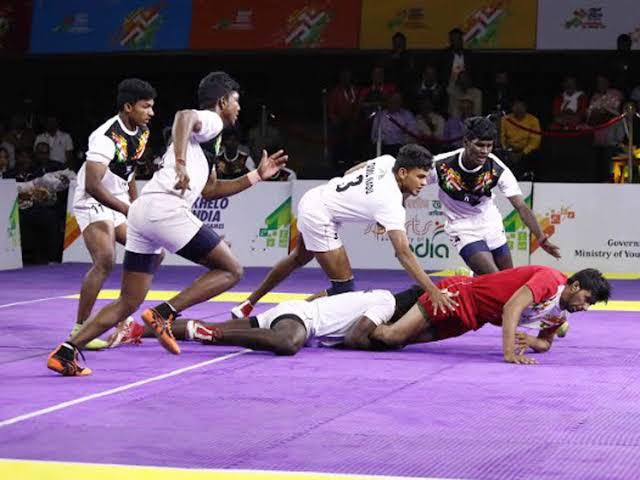
Summary
The clinch is one of the most dominant positions in Muay Thai, and knowing how to sweep from it can completely change the flow of a fight. A clinch sweep allows you to off-balance your opponent, control their posture, and send them to the ground without heavy strikes. This guide breaks down how clinch sweeps work, when to use them, and the key details that make them effective in real combat or sparring.
Understanding The Muay Thai Clinch
In Muay Thai, the clinch is a close-range position where fighters control each other’s upper bodies through grips around the head, neck, or arms. It is used to land knees, elbows, and off-balancing techniques.
The goal of the clinch is control; whoever dictates posture and balance usually dominates. Sweeps are an extension of that control, using timing and leverage rather than brute strength.
A well-timed clinch sweep can throw your opponent off balance, interrupt their rhythm, and earn you points in competition. It also demonstrates mastery of Muay Thai’s technical side, using skill and not power to dominate.
What Is A Clinch Sweep?
A clinch sweep is a technique where you use your body movement, grips, and footwork to off-balance your opponent and force them to fall. Instead of striking, you manipulate posture and direction to make them lose their footing.
Unlike a judo throw or wrestling takedown, the goal of a Muay Thai sweep is not to slam the opponent, but to control them and make them fall cleanly while you remain standing. In competition, staying upright after the sweep scores highly and shows dominance.
How To Execute A Basic Clinch Sweep
The key to every sweep is timing and control. Here’s a simplified step-by-step breakdown of a basic inside trip sweep from the clinch:
- Establish The Clinch: Secure the inside position by controlling your opponent’s head and neck. Your forearms should press against their collarbones, and your hips should stay close.
- Break Their Posture: Pull their head slightly downward or to one side to disrupt their balance. This makes it harder for them to resist your next move.
- Step Into Position: As you off-balance them, step your lead leg to the outside or inside of their leg (depending on the direction you’re sweeping). Keep your body weight centered.
- Reap Or Hook The Leg: Use your foot or shin to hook or block their leg while twisting your upper body in the opposite direction. The combination of upper and lower body movement breaks their stance.
- Follow Through And Stay Standing: Push or pull with your arms while continuing your hip rotation. As they fall, maintain your balance and posture. Staying upright is crucial to score cleanly.
The sweep should feel effortless when timed correctly. If you rely too much on strength, your balance suffers.
Common Clinch Sweep Variations
- Inside Leg Sweep (Hook Sweep): Hook your opponent’s leg from the inside as you pull their head forward.
- Outside Leg Sweep: Step outside their leg and sweep inward as you twist your body.
- Lift-And-Dump Sweep: Lift slightly with your hips and twist your upper body to off-balance them backward.
- Foot Trap Sweep: Step on your opponent’s foot as you pull them sideways, making them fall from being pinned in place.
Each variation requires control of posture and direction. Knowing which to use depends on your opponent’s stance and reaction.
Common Mistakes When Attempting Clinch Sweeps
- Leaning Too Much Forward: Causes you to lose balance and get countered.
- No Posture Control: Without controlling the head and neck, your sweep loses effectiveness.
- Sweeping Without Timing: Forcing the sweep while the opponent is balanced rarely works.
- Letting Go Too Early: Maintain clinch control until the sweep is complete.
- Neglecting Footwork: Good sweeps come from smooth stepping and weight shifting.
Why Clinch Sweeps Matter In Muay Thai
Sweeps are not just about throwing opponents to the floor; they represent control, composure, and technical mastery. A fighter who can clinch, off-balance, and sweep at will shows understanding of Muay Thai’s deeper strategy.
In traditional scoring, sweeps are highly valued because they show dominance. A clean sweep without losing balance can shift momentum or even decide a close match.
For self-defense, knowing how to off-balance someone safely without striking hard can also be a valuable skill.
FAQs About The Muay Thai Clinch Sweep
Q: Are Sweeps Legal In Muay Thai?
A: Yes, sweeps are legal as long as you maintain clinch control and are not using joint locks or throws similar to judo or wrestling.
Q: Can Smaller Fighters Use Clinch Sweeps Effectively?
A: Absolutely. Sweeps depend on leverage and timing, not strength. Smaller fighters often excel at using balance and angles to off-set bigger opponents.
Q: How Do Clinch Sweeps Score In Muay Thai Fights?
A: A clean sweep where you remain standing and your opponent falls scores strongly, as it shows superior balance and control.
Q: Which Muscle Groups Help Improve Sweeping Power?
A: Core, legs, and hips. Strength and conditioning exercises that improve rotation and stability enhance sweep effectiveness.
Q: How Can I Practice Clinch Sweeps Safely?
A: Drill slowly with a training partner and focus on control. Start by practicing off-balancing movements before adding the actual sweep motion.
Final Thoughts
The Muay Thai clinch sweep is a beautiful mix of timing, precision, and technique. It reminds fighters that power alone is not enough. Control and awareness win the clinch.
Whether in training or competition, mastering sweeps teaches balance, patience, and rhythm. They add depth to your clinch game and highlight the art’s graceful side, where a subtle shift of weight can make all the difference between falling and staying on your feet.
You may also like:
How To Check Kicks In Muay Thai
Summary In Muay Thai, every strike has an answer. For low kicks and body kicks, the answer is the check. This simple yet crucial move can change the flow of a fight, turning an opponent’s…
Summary Sparring isn’t just for fighters who step into the ring. For hobbyists, it’s one of the best ways to truly understand Muay Thai. It teaches timing, defense, and strategy in a way that pad…
Low leg kicks are one of the most under-appreciated weapons in striking arts. They quietly erode an opponent’s mobility, set the pace, and often serve as fight finishers. In Muay Thai, kickboxing, and MMA, a…
Muay Thai is often called the art of eight limbs, combining punches, kicks, elbows, and knees into a complete striking system. Among these weapons, the knee is one of the most powerful and effective tools,…
In combat sports, the way a fighter stands can change everything about how a match unfolds. Stance determines balance, power, and angles of attack. Among the many stances, the southpaw stance is often described as…
In Muay Thai, different fighters develop distinct styles based on their strengths and strategies. Muay Khao refers to the knee-fighting style, one of the most dominant approaches in the sport. A Muay Khao fighter uses…
Summary Footwork is one of the most important yet overlooked aspects of boxing. It determines balance, defense, and the ability to create openings. Two common types of movement used by boxers are parallel and diagonal…
Summary Osoto Gari, meaning “major outer reap” in Japanese, is one of the most effective and widely used throws in grappling. Originally from Judo, it has become a staple in Brazilian Jiu-Jitsu because of its…
Summary In boxing, stance shapes strategy. Southpaw fighters, those who lead with their right hand and right foot, often appear awkward to their orthodox opponents. Because most boxers are orthodox, the southpaw stance instantly changes…
Summary Every Brazilian Jiu-Jitsu practitioner eventually finds themselves caught in an armbar. It’s one of the most common submissions in the art. While the best defense is prevention, knowing how to escape when it happens…
Summary As parents, choosing the right physical activity for your child can feel overwhelming. Between soccer, basketball, and swimming, there’s no shortage of options, but martial arts continue to stand out as one of the…
Summary Staying active in Singapore in 2025 means combining fun, variety and accessibility. From outdoor green spaces and group fitness events to martial arts and even sport classes, there are many ways to keep moving…

































